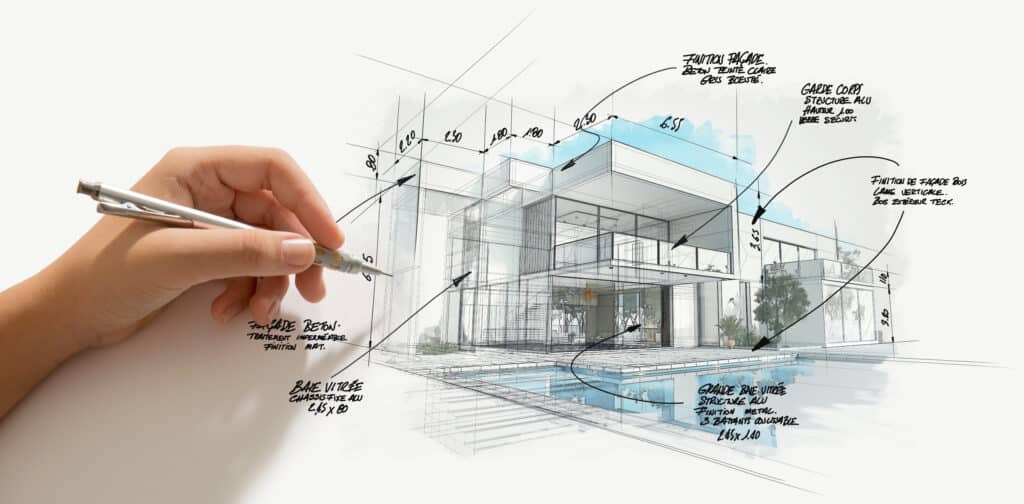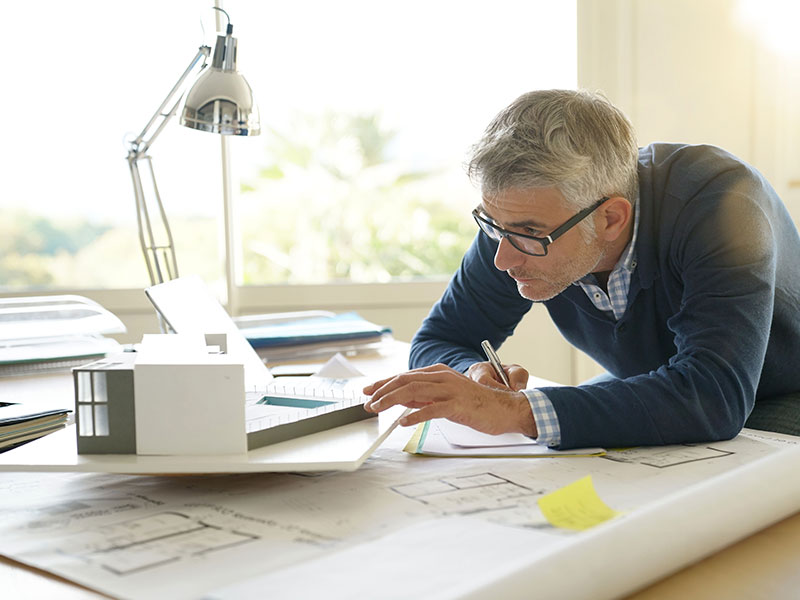Architect Portfolio Examples That Win Over Clients Fast
Recognizing the Diverse Occupation Paths Available for Aspiring Architect
As a hopeful Architect, you have a world of occupation courses waiting for you. Whether you're attracted to conventional style or the subtleties of sustainable layout, there's a specific niche that straightens with your rate of interests.
Traditional Architecture: Designing Structures and Structures
Conventional design concentrates on making structures and structures that mix functionality with aesthetic charm. As you explore this area, you'll value the elaborate equilibrium between type and function. You'll learn to attract motivation from historic designs, including elements like symmetry, products, and craftsmanship. Your layouts can mirror cultural heritage, showcasing neighborhood traditions while meeting modern-day needs.
You'll establish skills in drafting, model-making, and site evaluation, allowing you to imagine and connect your concepts effectively. Engaging with clients, you'll need to comprehend their vision and equate it right into feasible styles.
Additionally, developing codes and sustainability techniques are essential in your job, ensuring your frameworks are environmentally friendly and safe. As you expand in your profession, you'll find possibilities in residential, business, and even restoration jobs, each offering one-of-a-kind difficulties. Embracing conventional design paves the means for a meeting career that admires the past while forming the future.
Urban Planning: Forming Neighborhoods and Public Spaces
As an ambitious Architect, you can play an important function as an urban planner, transforming exactly how areas connect and function. By using area interaction methods, you'll ensure that residents have a voice in shaping their atmosphere. And also, incorporating sustainable style concepts will certainly help create rooms that not just satisfy today's needs but additionally protect the future.
Role of Urban Planners
While many might think of architects as the single visionaries behind structures, metropolitan organizers play an essential function in shaping the wider landscape of communities and public areas. By working together with numerous stakeholders, you'll assist develop parks, transportation systems, and domestic locations that advertise social communication and accessibility. Your proficiency in spatial layout and area dynamics allows you to visualize future growth while preserving social heritage.
Community Interaction Approaches
Reliable area involvement strategies are important for metropolitan coordinators to assure that the voices of homeowners are listened to and valued in the preparation process. To promote purposeful discussion, you must prioritize open discussion forums and workshops where community participants can express their concepts and worries. By actively integrating and paying attention responses, you'll produce spaces that mirror the neighborhood's demands, eventually leading to more lasting and successful metropolitan environments.
Sustainable Layout Concepts
When creating metropolitan areas, incorporating sustainable design principles is important for producing settings that grow both environmentally and socially. Think about incorporating environment-friendly spaces, like yards and parks, to boost biodiversity and boost air high quality.
Creating with water conservation in mind is likewise essential-- consider rain gardens and absorptive surfaces to handle stormwater. Including community participants throughout the planning process warranties that the rooms you create meet their needs and encourage social interaction. By embracing these concepts, you'll add to lively, lasting city landscapes that benefit every person.

Landscape Design: Producing Sustainable Outdoor Environments
As you check out landscape design, you'll discover vital layout principles that create stunning and practical outdoor rooms. Sustainable practices play an important function in ensuring these atmospheres flourish while reducing environmental impact. Plus, you'll discover a range of career opportunities that enable you to make a real distinction in exactly how people connect with nature.
Layout Concepts in Landscape
Recognizing style concepts in landscape design is vital for developing sustainable outdoor environments that harmonize with nature. You'll require to contemplate elements like balance, percentage, and range to assure your styles feel cohesive and inviting. In addition, pay interest to seasonal changes, designing with materials that enhance the surroundings year-round.
Sustainable Practices Review
Lasting techniques in landscape design not just concentrate on aesthetic appeals yet likewise focus on environmental health and wellness and source conservation. You can develop rooms that promote soil health, such as exercising and making use of organic materials permaculture concepts. Ultimately, these methods ensure your styles benefit both individuals and the environment for years to come.
Occupation Opportunities Exploration
With a strong foundation in lasting practices, landscape design supplies a variety of occupation paths that allow you to make a purposeful effect on the atmosphere. Urban coordinators often team up with landscape architects to develop green spaces in urban settings, improving city livability. If you're enthusiastic regarding education, think about becoming a landscape design educator, inspiring future generations.
Sustainable Style: Concentrating On Eco-Friendly Practices
As you explore your job in style, embracing environmentally friendly methods can establish you apart in an affordable area. Sustainable layout focuses on developing structures that reduce environmental influence while boosting passenger well-being. By integrating eco-friendly products, energy-efficient systems, and sustainable structure strategies, you'll add to a greener useful content future.
Beginning by gaining expertise of eco-friendly certifications like LEED or BREEAM, which can reinforce your qualifications. Take into consideration how all-natural light, ventilation, and thermal effectiveness can enhance design. Work together with engineers and environmental experts to innovate remedies that decrease waste and conserve sources.
Don't neglect the relevance of neighborhood involvement-- interesting regional stakeholders can motivate designs that balance with the setting. As customers progressively prioritize sustainability, your proficiency in environmentally friendly practices will not only draw in tasks however also fulfill your enthusiasm for accountable style. Embrace this essential element of the occupation, and watch your profession thrive.
Historical Conservation: Securing and Recovering Cultural Heritage
While you begin on your architectural trip, consider the crucial duty of historical preservation in maintaining our cultural heritage. This area focuses on the security and remediation of significant structures, sites, and structures that inform the tales of our past. By taking part in historic conservation, you'll aid safeguard the architectural legacy that shapes neighborhood identity.
As a historical conservation Architect, you'll analyze historical importance and examine the problem of frameworks. You'll function closely with historians and guardians to guarantee genuine remediation methods are employed. This occupation path enables you to blend creative thinking with research, allowing you to create solutions that value original products and craftsmanship.
Your job not just adds to sustainability by reusing existing buildings yet additionally fosters a sense of pride within communities. Welcoming this path will help you come to be a guardian of history, protecting the stories and appearances that improve our lives.
Inside Style: Enhancing Indoor Spaces
Historic conservation and interior style both share a commitment to enhancing the developed atmosphere, but they concentrate on different aspects. While historical preservation stresses preserving a structure's social and historical value, interior architecture absolutely nos in on optimizing indoor areas for performance and appearances.
As an ambitious Architect, you'll discover that interior design allows you to mix creative thinking with technical abilities. You'll make spaces that not only look great yet additionally advertise comfort and effectiveness. This area entails recognizing how light, color, and products connect within an area, impacting mood and use.
You'll function on different jobs, from domestic homes to commercial workplaces, guaranteeing that each setting fulfills the requirements of its occupants. By focusing on individual experience, you can change interiors right into motivating and practical spaces, making a substantial influence on how people engage with their surroundings. Welcome the opportunity to boost indoor settings and shape the way people live and work.
Industrial Style: Combining Performance With Appearances
Industrial design plays a necessary function in creating items that see this site seamlessly blend aesthetics with functionality, ensuring that what you make use of everyday is not just aesthetically appealing however also useful. As an ambitious Architect, you could engage yourself in this area, focusing on designing every little thing from furniture to customer electronics. Your job includes understanding individual needs, materials, and producing processes, allowing you to produce ingenious remedies that enhance day-to-day experiences.
In industrial style, you'll usually collaborate with marketing experts, makers, and designers, guaranteeing that your designs are not only gorgeous however likewise feasible. You'll find out to stabilize kind and function, prioritizing use without sacrificing style. By refining your skills in mapping out, 3D modeling, and prototyping, you'll be well-appointed to bring your ideas to life. This career path supplies a dynamic setting where creativity meets practicality, making it a gratifying option for architects curious about shaping the products of tomorrow.
Regularly Asked Questions
What Educational Credentials Do I Need to Become an Engineer?
To come to be a designer, you'll need a professional level in architecture, usually a Bachelor's or Master's. Furthermore, you'll have to complete an internship and pass the Architect Enrollment Exam to exercise legally.
Exist Certification Requirements for Various Building Job Paths?
Yes, there're accreditation needs for different building courses. Architect. You'll need to pass examinations, full internships, and sometimes go after specialized training, depending upon your picked emphasis, like landscape architecture, city design, or historic conservation
What Software Abilities Are Necessary for Designers Today?

How Can I Gain Practical Experience While Examining Architecture?
You can obtain functional experience by interning at building firms, taking part in style competitions, offering for area projects, or collaborating with schoolmates on real-world projects. These possibilities enhance your abilities and construct important connections in the industry.
What Job Opportunities Exist Outdoors Typical Style Firms?
You can discover numerous task possibilities outside traditional style companies, like metropolitan planning, interior style, landscape architecture, building and construction administration, realty advancement, and even functions in sustainability consulting. Each offers one-of-a-kind difficulties and rewards.
Whether you're drawn to traditional architecture or the nuances of sustainable style, there's a niche that aligns with your passions.When creating city spaces, including lasting layout concepts is critical for creating environments that grow both environmentally and socially.As you explore landscape design, you'll find crucial style principles that create lovely and functional outside areas.Recognizing style concepts in landscape architecture is necessary for producing lasting outdoor environments that balance with nature.In industrial layout, you'll often collaborate with designers, makers, and marketers, making certain that your designs are not only stunning however likewise practical.